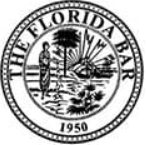Your home is likely the largest investment you will make in your lifetime. As such, and regardless of whether you plan to move in the future or make the house your forever home, you want to do everything in your power to keep its value up.
Unfortunately, despite your best efforts to maintain the structure of your home and the property on which it sits, outside factors can adversely affect your home’s resale value. While some factors, such as the state of the economy, are obvious influencers of property values, there is one factor that many homeowners overlook, and that is the state of their neighborhoods. If your neighborhood is on the decline, your home’s value will drop no matter how much money you put into it. Sundae shares red flags that are indicative of a deteriorating neighborhood.
Streets appear messy
Your neighborhood does not have to boast overt signs of deterioration for you to suspect that property values are down. Rather, look around for small signs, such as trash littering the streets, smudges on buildings and sidewalks, and broken or dilapidated property. When small repairs go unattended, it is often an indicator that the neighborhood does not have the resources to make the fixes.
Local businesses relocate
You can often tell the health of a neighborhood by the number of businesses that choose to establish themselves there. If local businesses start moving to nearby towns, be wary. If larger chains move away, become concerned.
A local hospital closes
Because of the often life-saving services they provide, hospitals are a necessity in any community. If a local hospital closes, it is likely because it can no longer justify the cost of operating in the neighborhood. In addition to being a red flag in and of itself, a hospital closure means an imminent rise in unemployment rates, as hospitals employ thousands of people. Increased unemployment rates also contribute to the decline of a neighborhood.
Multi-family properties are on the rise
When homeowners convert their single-family homes into multi-family properties, it could indicate that property values are falling. Many times, landlords will covert single-family homes into multi-family units to make more money as the desirability of rentals falls.
The number of vacancies increase
Vacancies are almost always indicative of a neighborhood on the decline. Boarded-up storefronts, empty houses and a high volume of apartments for rent show a lack of demand. Unfortunately, lowering the rent prices of commercial and residential units only exacerbates the situation, as doing so may increase demand but among the wrong type of clientele.
These are just a few red flags that indicate your neighborhood is deteriorating. If you notice one or several of the above, consider preparing your property for sale sooner rather than later.







